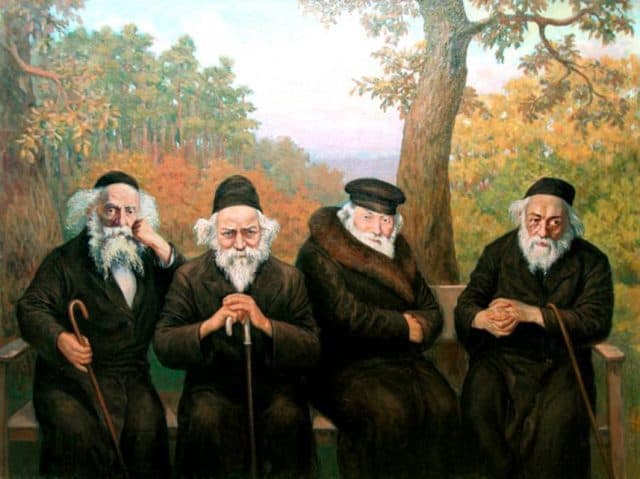Miriam Gedwiser
Chaim Saiman argues that the number of “gedolim” associated with a community – in this case, the modern and liberal Orthodox communities – is a function of demand for a “gadol” figure as much as or more than of supply of knowledgeable individuals. That claim seems right, and the questions it raises about what sort of leadership the liberal and Centrist Orthodox communities do and should seek are important ones.
I have one small and one large critique, however.
The small: The detailed discussions of the roles of specific individuals in specific communities did not ring entirely true. For example, his claim that “there is no community that stakes its halakhic identity on R. [Daniel] Sperber’s authenticity” should have taken into account the fact that Darkhei Noam, a partnership minyan on the upper west side of Manhattan, seems to do just that. Darkhei Noam refers to R. Sperber as its halakhic adviser, and refers questions of communal ritual (not just those involving women) to him. This type of staking of a halakhic identity doesn’t seem to be quite what Saiman has in mind, so his underlying claim is probably still true for the purposes of his essay – but greater nuance reflecting the reality on the ground would have been useful. Others more familiar with haredi culture may have similar critiques from that perspective.
The larger: If we begin, as Saiman does, by asking where the Modern Orthodox gedolim are, one plausible way to answer is to show how R. Soloveitchik or R. Lichtenstein zt”l plausibly fit the mold. But if instead we ask, “given the role that R. Lichtenstein plays in his community, what is the analog in the haredi community?” I do not think “gadol” would be the obvious answer – especially not gadol of the yamim al yemei melekh tosif sort. Equally likely is that R. Lichtenstein would fit into the category of exactly what he was – an influential rosh yeshiva.
The rosh yeshiva is a figure known throughout the Orthodox world. And it is often the case that a particularly influential rosh yeshiva is succeeded by someone with less of a wide influence. He will always be succeeded by someone, however, if the yeshiva is to exist.
Because rosh yeshiva is an institutional position, it will be filled by “the best available talent” much like the fundamentally political position of haredi gadol. Non-haredi Orthodoxy, in contrast, simply has no position of “gadol” that must be filled. What it has is some yeshivot whose roshei yeshiva will rise to varying degrees of prominence.
In fact, if we wish to talk about the American Centrist Orthodox community, what it has is exactly one yeshiva, Yeshiva University. (While there may be one or more smaller regional yeshivot that arguably align with YU, more or less, I don’t think there is any other ideological engine of Centrist Orthodoxy.) The so-called liberal Orthodox community is also, in the U.S., essentially a one-yeshiva (Yeshivat Chovevei Torah) community.[1] This sense of scale often gets lost in the armchair sociology of Orthodoxy. Here are some relevant numbers from a recent census of Orthodox day schools and yeshivot:[2] The number of k-12 students in Orthodox schools in Lakewood, New Jersey, in 2013, was approximately 18,000 – only slightly less than the number of students in “Centrist Orthodox” schools nationwide. If we assume the YU sphere of influence to be what the survey calls “Centrist Orthodox” and “Modern Orthodox” schools combined, the total grows to approximately 46,000 students in grades k-12 across the United States. By comparison, there were approximately 52,000 k-12 students in chassidic schools, and another 28,500 in yeshivish schools, in New York City alone.
The “gedolim” of eretz yisrael sit at the top of a yeshivish hierarchy that encompasses a community several times the size of Centrist and/or Modern Orthodoxy (and growing). (For example, the 2013 census lists almost 76,000 students in yeshivish schools, and almost 82,000 students in chassidic schools, in the U.S., and the haredi “chinuch atzmai” system in Israel educates another 80,000.)
Modern Orthodoxy, then is a relatively small community centered around one or two yeshivot. That the current crop of roshei yeshiva are not generally as revered as their predecessors doesn’t necessarily mean all that much, unless the trend is irreversible in the same direction.
My suggestions, admittedly based on personal impressions more than rigorous analysis, is that the “sense of halakhic authority” in a yeshiva community derives from the relationships students develop with teachers whose learning and wisdom they greatly respect, whether or not anyone is crowned a “gadol.” If this sense is lacking in Modern Orthodoxy or certain segments thereof, relative to non-modern Orthodoxy, it seems to me that a difference in the relationship to yeshiva learning and Torah teachers in general will be key to understanding how and why.
Looking at Centrist Orthodoxy as basically a single yeshiva community also places Saiman’s inquiry into R. Daniel Sperber’s “gadol” status in an interesting light. Although liberal Orthodoxy has its own yeshiva, it also, in my experience, looks to academia for religious insight far more than other forms of Orthodoxy. It is no accident, then, that its best candidate for “gadol” would be a university professor.
[1] I will adopt Saiman’s terminology here, and refer to the two collectively as “Modern Orthodox.”
[2] While I am sure that there are those who can and will quibble with the methodology or results of this survey, the numbers should suffice for the general purposes to which I put them here.
To return to the Symposium’s Main Page, click here



![Yom Yerushalayim: On Not Yet, Always Already, and the [Im]possibility of Crossing Over](https://thelehrhaus.com/wp-content/uploads/2025/05/The_Kotel_23908738216-238x178.jpg)






 Site Operations and Technology by The Berman Consulting Group.
Site Operations and Technology by The Berman Consulting Group.